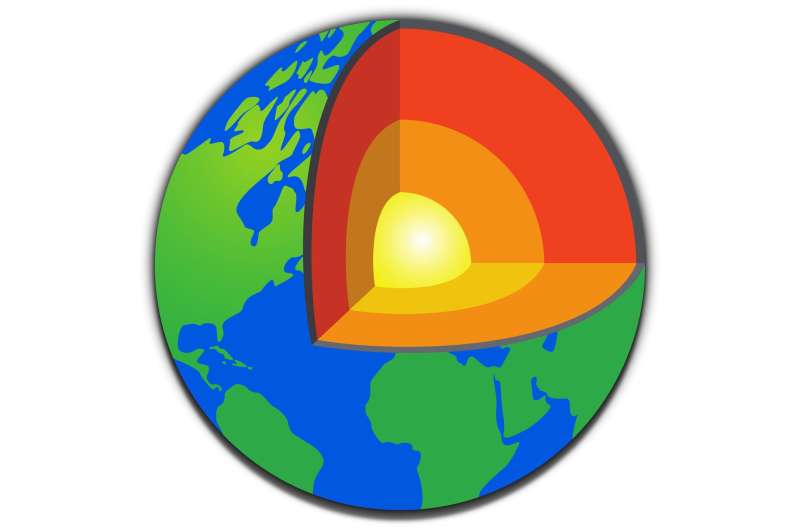This article has been reviewed according to Science X's editorial process and policies. Editors have highlighted the following attributes while ensuring the content's credibility:
fact-checked
peer-reviewed publication
trusted source
proofread
Researchers predict thermal conductivity and heat flow distribution at core-mantle boundary

A team led by Prof. Wu Zhongqing from the University of Science and Technology of China (USTC) of the Chinese Academy of Sciences (CAS) has predicted the thermal conductivity of bridgmanite and post-perovskite at high pressure and temperature using machine learning potential (MLP), and clarified the distribution of heat flow and the magnitude of heat flux at the core-mantle boundary (CMB).
Their work was published in Earth and Planetary Science Letters.
Heat flow from the core is a fundamental parameter to understand the structure and evolution of the Earth, which is obtained by multiplying the thermal conductivity at the lowermost mantle by the temperature gradient. Measurement of the thermal conductivity of minerals at high temperature and pressure remains one of the most complicated tasks.
The research team developed an efficient computational method for high-temperature and high-pressure thermal conductivity by combining first-principles calculations with machine learning. Utilizing first-principles data to train machine-learning potential, the team managed to conduct molecular dynamics simulations with tens of thousands of atoms while maintaining the accuracy of first-principles. This method efficiently solved the finite-size effect and obtained reliable results on thermal conductivity.
The simulations showed that at the lowermost mantle, 12.5 mol% Fe reduced the thermal conductivities of bridgmanite and post-perovskite by 10% and 14%, respectively, and a phase transition from bridgmanite to post-perovskite increased the thermal conductivity by 20%–30%. The team has previously used Monte Carlo method and elasticity model to perform an inversion for the mineral content and temperature distribution of in the lower mantle. Combining with the previous results, they determined the thermal conductivity and temperature gradient at the CMB, therefore yielding the distribution of heat flow.
The high-temperature large low shear velocity province (LLSVP) reduced the thermal conductivity of the minerals in its interior as well as the temperature gradient from the LLSVP to the core, which led to anisotropy in the heat flow distribution. The heat flux at the CMB obtained from the integration of the heat flow distribution was 7.1 ± 0.5 TW. The team further derived the age of the inner core to be 0.75 ± 0.35 Ga based on the energy conservation law.
More information: Dong Wang et al, Thermal conductivity of Fe-bearing bridgmanite and post-perovskite: Implications for the heat flux from the core, Earth and Planetary Science Letters (2023). DOI: 10.1016/j.epsl.2023.118368
Journal information: Earth and Planetary Science Letters
Provided by Chinese Academy of Sciences




















